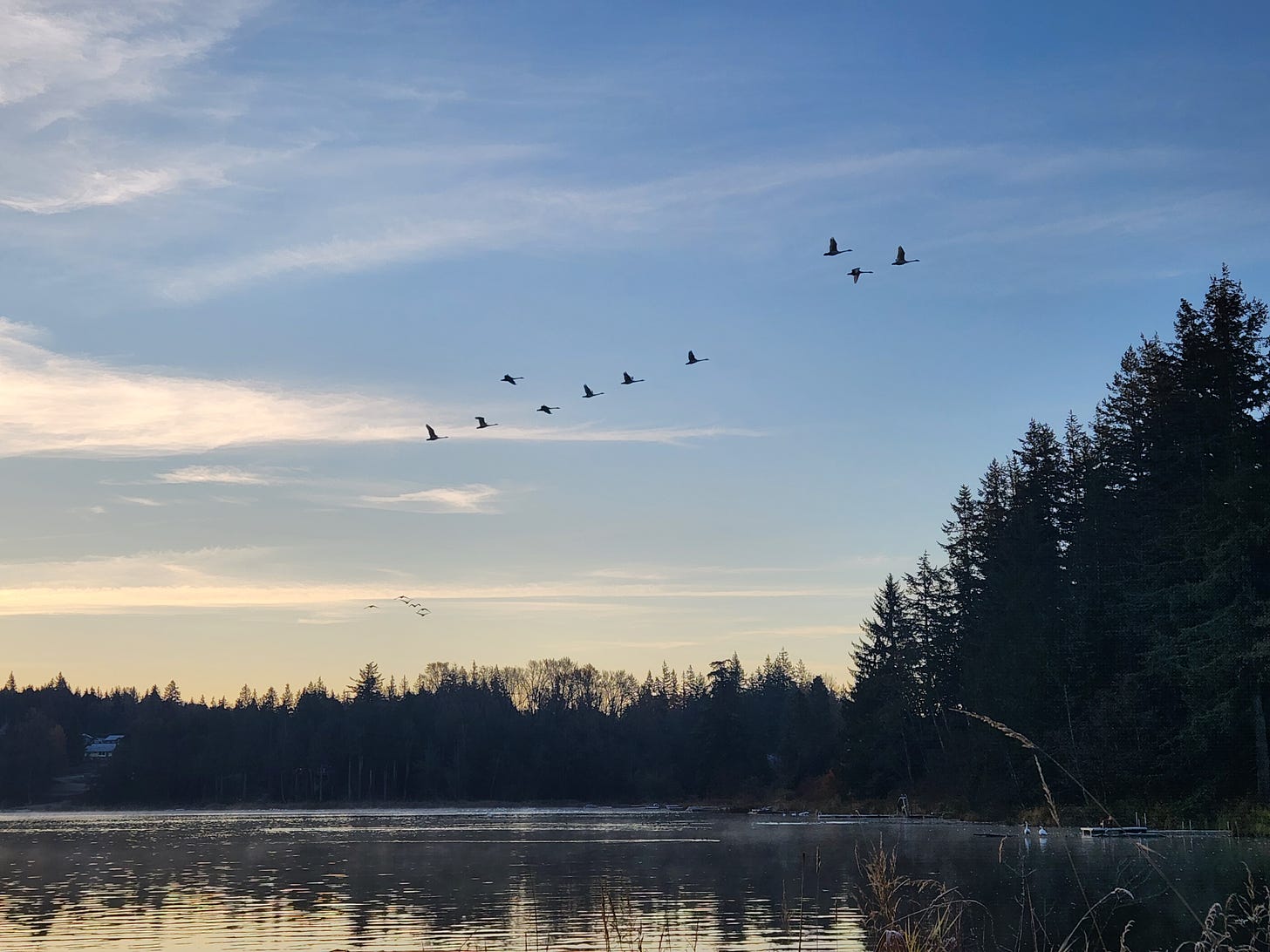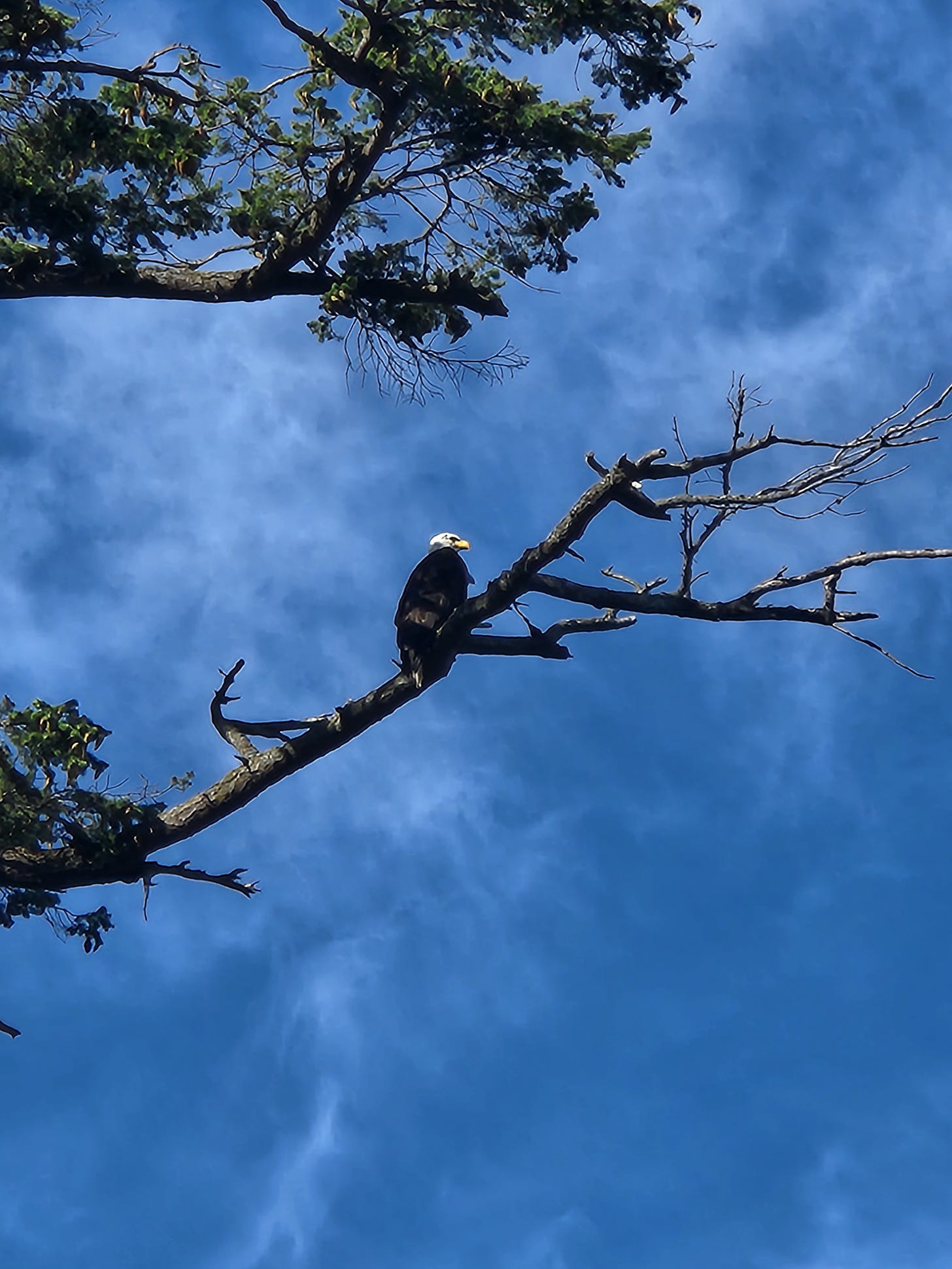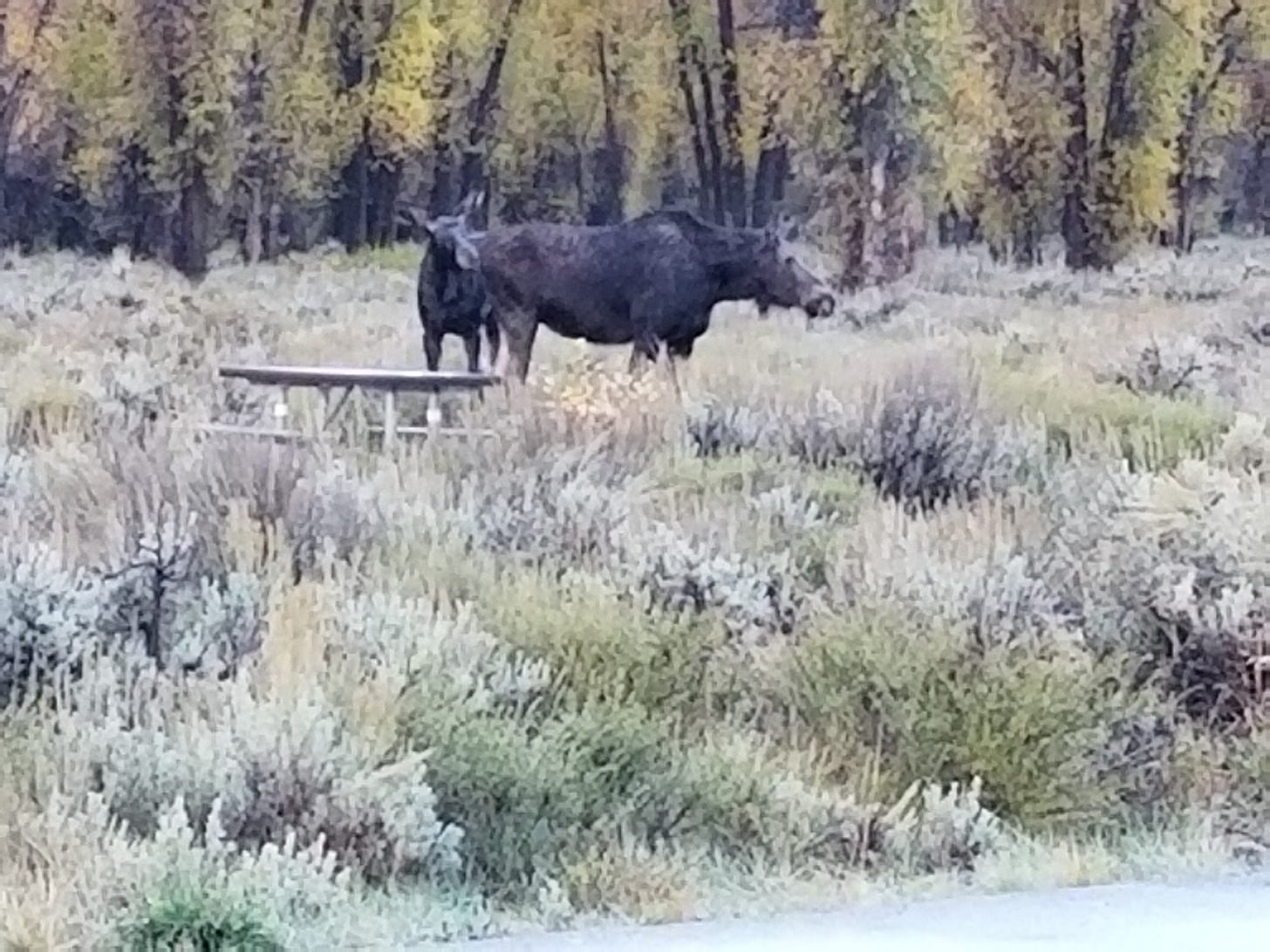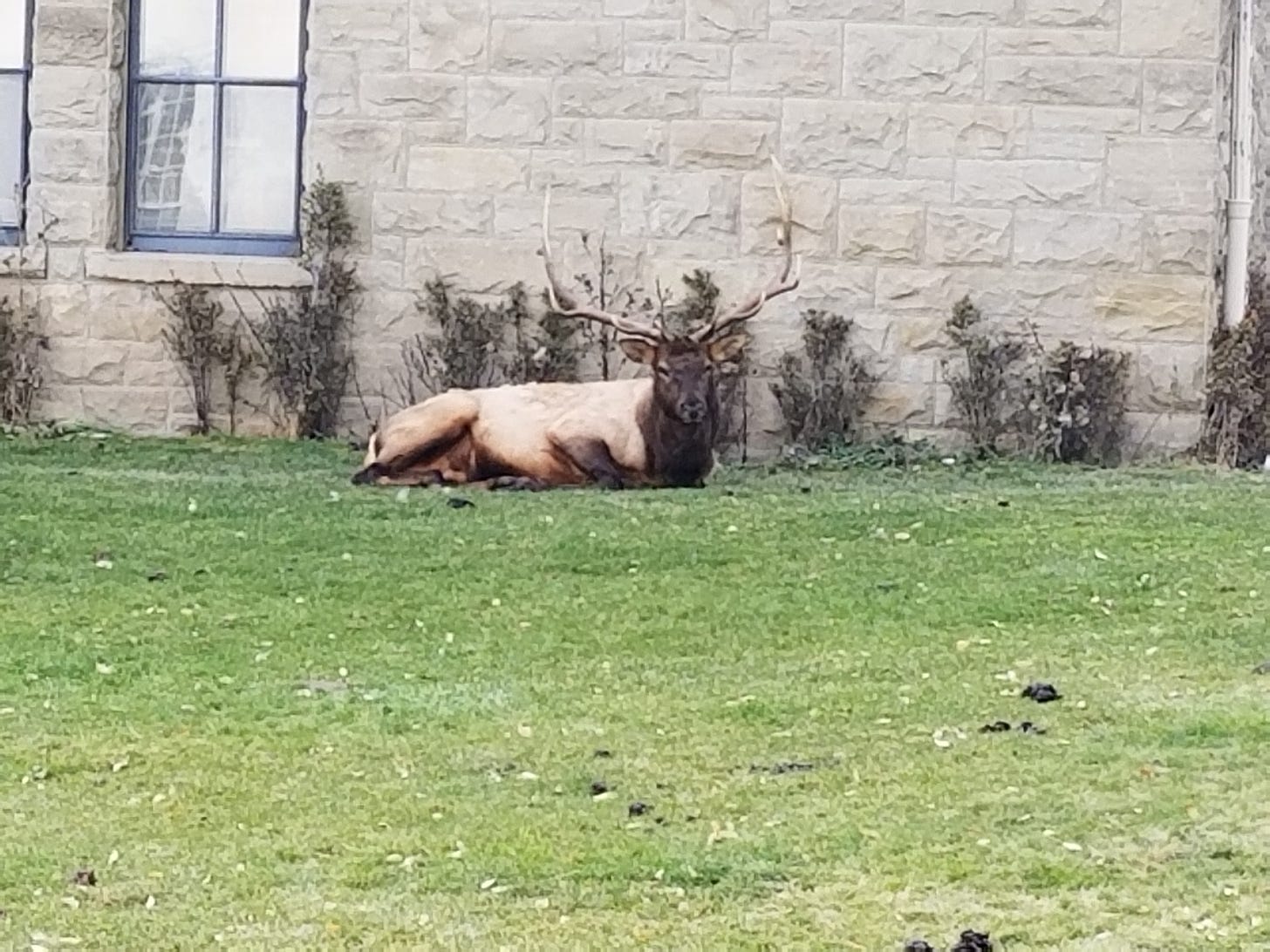As an American environmental historian, I have a stronger sense of how things have changed for wildlife over time than an average American, I suspect. However, there are times when I am confronted with data and can still be shocked. This happened recently and it’s prompting me, for The Wild Card this week, to mull over big numbers, the expanse of time, and imagination. Read on!

“The Air Permanently Fallow”
When I taught American environmental history, I confronted some common misconceptions. Many students vaguely understood that Americans did not recognize damage done to the living world until relatively recently, a byproduct mainly of the industrial revolution. They were somewhat surprised when they learned about restrictions on hunting or fishing that were implemented (if not enforced) just a few years after colonization began when colonists recognized undesirable scarcity.
In Rural Hours, the 1850 book that I wrote about last week, Susan Fenimore Cooper called the “reckless extermination of the game in the United States” unprecedented in world history. Not only that, Cooper lamented that the flocks of migrating birds passing over her valley in the mid-19th century were “nothing compared with the throngs that went and came” before Europeans arrived.
The decline in American wildlife started well before the industrial revolution transformed most corners of the continent.
I did not grow up paying close attention to bird life, so it is perhaps surprising that the first time I remember being flabbergasted by ecological bad news concerned birds.
Five years ago, a major study appeared that estimated the loss of birds in North America in the previous five decades with a staggering number. Since 1970, North America bird populations declined nearly 30%. In starker terms, there were three billion fewer birds when COVID-19 started than there were when Richard Nixon signed the National Environmental Policy Act on January 1, 1970.
That number — 3,000,000,000 — astounded even those who studied it.

To be sure, some bird populations increased, such as waterfowl and raptors. But the overall trend showed unmistakable decline. I remember sitting with that weighty number, numbed by it.
It brings to mind a line from a favorite writer who tried unsuccessfully to conceive of a world without birds. “I suppose I could get by without the cats, or trade them for other interesting wanderers, maybe coyotes or foxes,” wrote Ivan Doig in Winter Brothers, “but a birdless world, the air permanently fallow, is unthinkable.”
Unmistakable and Unthinkable
There are other unthinkable worlds, too. News of more natural impoverishment crowded my inbox last week.
The World Wildlife Fund and the Zoological Society of London released their latest update to the Living Planet Index, a database they use to chart nearly 5,500 species across almost 35,000 local populations. The top line numbers in this recent update are discouraging. The species they track have declined 73% between 1970 and 2020.
The species are a selection across the globe, and the science involved in determining these numbers is not perfect, which leads some critics to emphasize some uncertainty rather than the clear trends.
The numbers tell a tragic story. Freshwater animals declined by 85%, terrestrial species fell by 69%, and marine populations dropped 56%. Latin America (including the Caribbean) faced the worst record, followed by Africa, then Asia and the Pacific. One reason that Europe and Central Asia were the least bad is because their wildlife populations faced a dire situation before 1970, the study’s starting point. They also offshore many environmentally deleterious activities.
The authors of the Living Planet Index fear an ecological unraveling, as emphasized in their executive summary. Thresholds are in danger of being crossed after which ecosystems would veer into irreversible directions. Habitat destruction and loss are the largest factors contributing to this decline, but energy and finance sectors also need wholesale change if we are to stall and reverse this trend.
One target the index authors point to for redirecting these trends comes out of the Kunming-Montreal Global Biodiversity Framework from 2022 that identified a series of goals to reset global conservation. In part, that framework sets targets of 30% of global land, waters, and seas being conserved and 30% of degraded ecosystems being restored by 2030. This range is consistent with the Biden Administration’s approach, outlined in an Executive Order titled “Tackling the Climate Crisis at Home and Abroad.”
The 30 x 30 approach sounds ambitious. But even that is likely insufficient to reverse the sort of trends scientists keep identifying.
Responding to Wounds with Imagination
In one of his most pathos-laden sentences, conservationist and writer Aldo Leopold said, “One of the penalties of an ecological education is that one lives alone in a world of wounds.” The more we know, perhaps the less alone we are. However, those stark percentages of loss I shared above speak loudly of those wounds.
Ultimately, Leopold pushed for an ethical revolution that would change how humans understood and treated land. He claimed to “have no hope for conservation born of fear.” While I suppose that fear struggles to build a broad-based commitment for any political project, fear for the future of wildlife seems like an appropriate response to numbers and trends like these.
Are we doing enough now for the future? Scott Russell Sanders, one of my favorite essayists, wrote many years ago of the cascading regrets that pile up over time:
Every day we discover new reasons for regretting what our predecessors have done; after we are gone, our children will discover even more reasons to regret what we are doing now.
The devastating collapse of populations outlined in these reports roughly matches my lifetime, a time when global standards of living have risen dramatically and environmental protection has become enshrined in law. I have lived in boomtimes. This half-century has seen so many positive trends. Alongside them have unfolded disastrous ones. Thus, a knotty paradox exists.
To ensure our species moves toward justice, for all our members and for the non-human world with whom we share Earth, we must tap our imaginations and see more clearly.
The late Barry Lopez spoke to this need:
It is not possible to say anything definitive here, except perhaps that dramatic change in the near future seems to be in the offing, and if the species is to achieve its aspirations for justice, reduced suffering, and transcendent life, and if it is to prevent the triumph of machinery that it so clearly fears, an unprecedented level of imagination is required.
I hope we find the ways necessary to meet the moment.
Closing Words
Relevant Reruns
This week’s newsletter touches on many core themes in my newsletter archive, but perhaps this one about the Endangered Species Act at 50 years is most relevant. You can read a story I wrote last year about efforts to reintroduce grizzly bears in the North Cascades here. (On the more creative side, my essay, “War and Geese,” touches on some of these themes more personally.)
New Writing
Yesterday, my monthly interview for paid subscribers posted; upgrade and have a look. I was interviewed for a story about what is at stake for public lands with the election; you can read it here. My most recent entry at HistoryLink.org has appeared; click here to learn about efforts to recover salmon in Washington state over the last half-century, a fitting addition to this week’s newsletter.
As always, you can find my books, and books where some of my work is included, at my Bookshop affiliate page (where, if you order, I get a small benefit).
Taking Bearings Next Week
My newsletter will cycle around to The Classroom next week. Stay tuned!






Fantastic piece. I can't help but think about parallels between the crises facing wildlife today and the crisis facing birds at the turn of the century. During the progressive era, people finally recognized the scale of destruction caused by market and sport hunting, and worked together to pass the Migratory Bird Treaty Act in 1918 which dramatically restricted hunting and forms the foundation of bird conservation today. A society-spanning change was necessary to mobilize activists, hunters, children, and eventually legislators to get the law passed, and it had a hugely positive impact on bird populations. The threats facing birds today are a lot harder to recognize - they're not hunters that we can point fingers at - but they're even more serious. What will it take for us to mobilize our society to prevent the disappearance of wildlife before it's too late?
I followed a link regarding public lands and will come back to it when I have the proper time, but it brought to mind a thought that I considered a number of years ago. It is a different topic, but it had to do with our money standard. The US went off the gold standard to a Federal Reserve currency, which is a shift from a tangible asset to vapor. So the thought was that we could devise a dollar pegged to federal public land. It would tag the money to the land, but not in the manner that you could use the piece of land as you wish. Foreign countries could use and own the currency, but not take it away, or build on it. Federal land could be increased or decreased, if needed, to adjust the money supply up or down, but not necessary, as the existing money could be allocated up or down to each unit. (or the size of units adjusted). Public State and Federal (and Native) lands could aslo be swapped out.
So, my question to you is this concept has feasability?